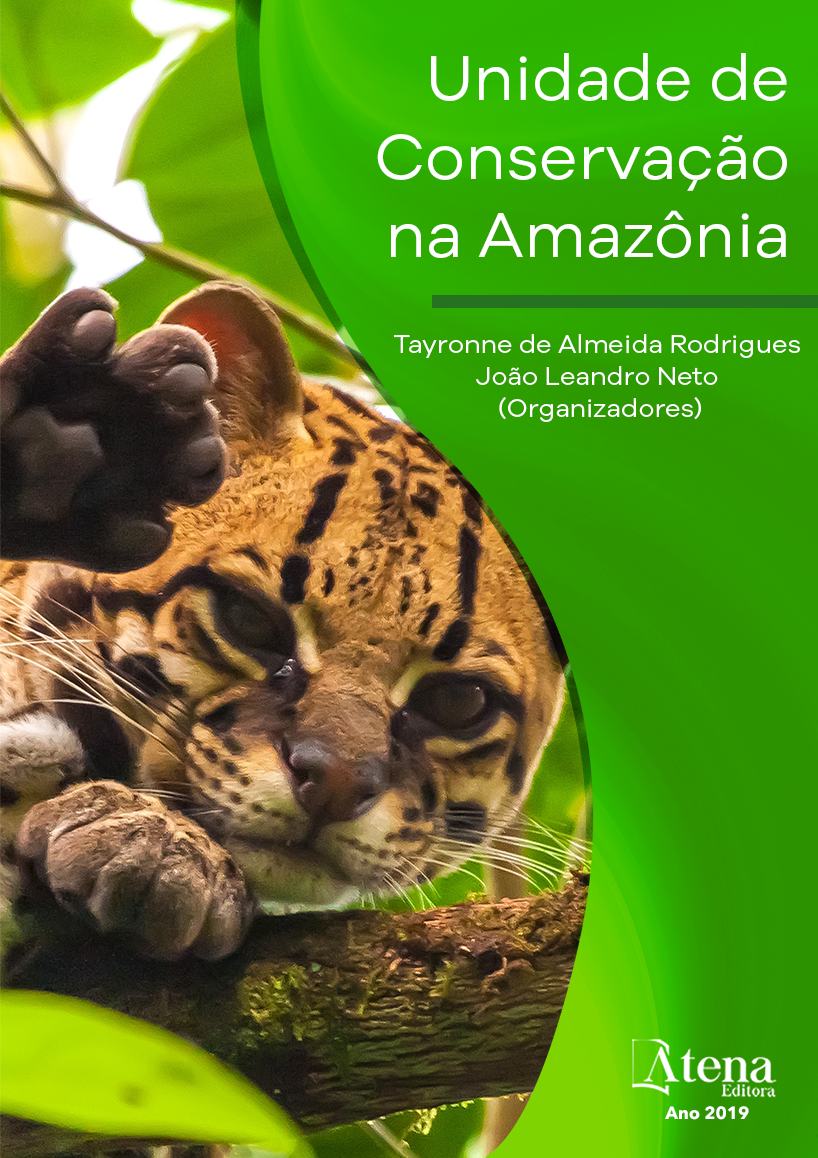
ANÁLISE DAS PREFERÊNCIAS DE ISCAS NA CAPTURA DE ARTRÓPODES PRESENTES NA MATA FECHADA DA FLORESTA NACIONAL DO TAPAJÓS
Os artrópodes são animais
invertebrados, celomados e triblásticos
encontrados em todas as regiões do planeta.
Na captura de artrópodes, assim como na de
outras espécies, a armadilha do tipo “pitfall” é
viável, introduzida no solo, possui baixo custo
para fabricação e utilização, sendo bastante
utilizada pelos pesquisadores. O trabalho
teve como objetivo analisar a preferência dos
artrópodes pelos diferentes tipos de iscas de
uma área de mata fechada da Floresta Nacional
do Tapajós. Foram abertas 4 trilhas de 100 m,
em cada uma haviam 4 armadilhas: vazia, fígado
bovino, fezes de galinha e álcool, dispostas com
diferença de 10 m entre elas. O delineamento
experimental utilizado foi inteiramente ao
acaso. No total foram instaladas 16 armadilhas
de solo que permaneceram no campo por 24
horas. Após a coleta, os organismos foram
acondicionados em frascos etiquetados,
contendo 70 ml de álcool 70%. As amostras
foram levadas ao Laboratório de Zoologia, onde
se sucedeu a triagem dos artrópodes coletados.
Depois da identificação, procedeu-se à análise
de diversidade de Shannon-Wienner (H’), no
programa Excel, para verificar a diversidade de
artrópodes. Foram encontrados 714 artrópodes,
esses foram classificados em 12 ordens. Com
o uso do índice de diversidade (ShannonWienner), a riqueza de ordens foi melhor
amostrada na isca contendo fezes de galinha,
seguidas por vazio, álcool e fígado. Concluise que dentre as ordens coletadas, a ordem
Hymenoptera obteve maior abundância. Como
melhor isca obteve-se fezes de galinha, pois a
abundância de artrópodes foi mais significativa
nas armadilhas que o continham
ANÁLISE DAS PREFERÊNCIAS DE ISCAS NA CAPTURA DE ARTRÓPODES PRESENTES NA MATA FECHADA DA FLORESTA NACIONAL DO TAPAJÓS
-
DOI: 10.22533/at.ed.6381930091
-
Palavras-chave: Diversidade, Flona, Pitfall.
-
Keywords: Diversity, Flona, Pitfall.
-
Abstract:
he arthropods are invertebrate
animals, celomados and triblastics found in
all regions of the planet. In the capture of
arthropods, as well as in other species, the trap
of the type “pitfall” is viable, introduced in soil,
has a low cost to manufacture and use, being
widely used by researchers. The objective
of this work was to analyze the preference of arthropods by different types of baits of a closed forest area of the Tapajós National
Forest. Were opened 4 tracks of 100 m, in each had 4 traps: empty, beef liver, chicken
feces and alcohol, arranged with a difference of 10 m between them. The experimental
design was completely randomized. In total were installed 16 pitfall traps which have
remained in the field for 24 hours. After collection, the bodies were placed in labeled
vials containing 70 ml of alcohol 70%. The samples were taken to the Laboratory of
Zoology, where it came to the screening of arthropods collected. After identification,
we proceeded to the analysis of shannon-wienner diversity (H’), in the Excel program,
to verify the diversity of arthropods. 714 arthropods were found, these were classified
into 12 orders. With the use of the diversity index (Shannon-Wienner), the wealth of
orders was better sampled bait containing chicken feces, followed by empty, alcohol
and liver. It is concluded that among the orders collected, the order Hymenoptera
obtained greater abundance. As the best bait we obtained chicken feces, because the
abundance of arthropods was more significant in the traps that contained.
-
Número de páginas: 15
- Larissa Carneiro Viana
- Leandro Lira de Souza


